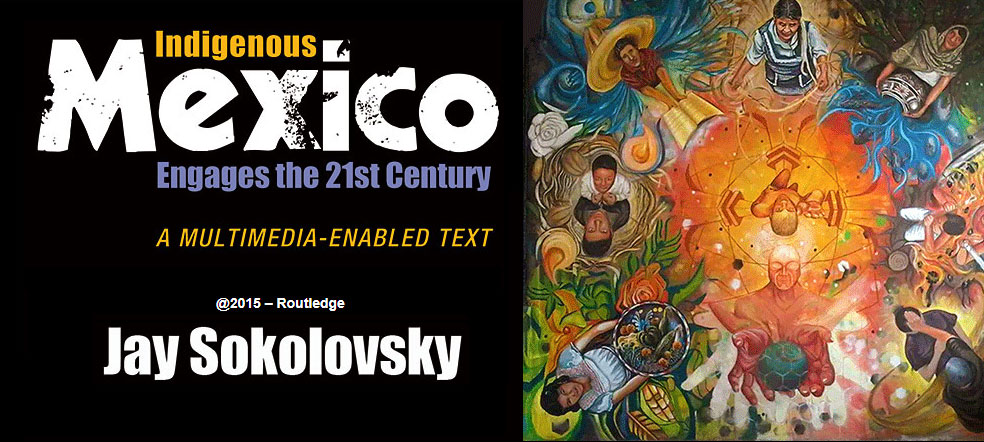Welcome
Set in the rugged mountains overlooking Mexico City, Indigenous Mexico Engages the 21st Century fuses text with a range of digital media, to explore the contemporary lives and culture of San Jerónimo Amanalco’s residents. Our understanding of the community and its people, culture and region is enhanced through Power Point learning modules, archival documents, audio, and video gathered through ethnographic research over the past 40 years. These materials are not mere adjuncts to the written page, but learning tools integrated into the fabric of the text.
Resources in the book allow readers to visually
Within the website some chapters will also have questions for readers tying together the print and digital materials such as in the last slide of a Power Point learning module concerning Amanalco’s fading archaeological heritage.
Each icon thus allows readers of the e-book direct access to the digital resources and guides readers of the printed book to the website for access to those same resources. On the website, banners, with corresponding icons, alert
readers to specific resources.
Icons used in this book
Video
PowerPoint
Audio
General
Added Value
Chapters
Introduces readers to the dilemmas of fieldwork and moves from early contact with the village to what one would experiences coming into Amanalco today.
Introduces the core constructs of cultural scripts, cultural spaces, ethnoscapes and globalization
Provides the historical and cultural context for understanding the community’s ability to be both the most traditional and most rapidly changing in its region.
Based on four decades of research, the chapter discusses the need to adapt anthropological fieldwork to the changing realities of globalizing indigenous societies
Lays out the transforming cultural scripts and spaces which are encountered along the contemporary life course. Details how the loss of a campesino life course is altering perceptions of work, gender and aging and includes newly adopted rituals, such as the Quinceañera.
Explores the Mexican notion of indigenismo and the locally contested development of bilingual schools. Focuses on the reframing of ethnicity from an identity of Indio to the ethnoscape of Indigena.
Introduces the contemporary social and economic world of young adults with the tense beginning of Rosalba’s wedding.
Uses the celebration of saints in Amanalco to discuss the multilayered nature of religious life and the spiritual beliefs held by Amanalco’s residents.
Explores through mythology and local tales of witches, vampires and water dwarfs, a magical realm of Amanalco’s ethnoscape.
The final chapter examines the many meanings of the title, Never More Campesinos, looking at the most recent changes, especially the development of a surprising new cultural center developed by a former drug addict.
